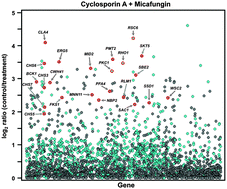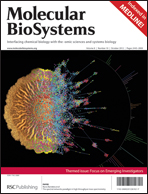Abstract
Fungi rely on regulatory networks to coordinate sensing of environmental stress with initiation of responses crucial for survival. Antifungal drugs are a specific type of environmental stress with broad clinical relevance. Small molecules with antifungal activity are ubiquitous in the environment, and are produced by a myriad of microbes in competitive natural communities. The echinocandins are fungal fermentation products and the most recently developed class of antifungals, with those in clinical use being semisynthetic derivatives that target the fungal cell wall by inhibiting 1,3-β-D-glucan synthase. Recent studies implicate the protein phosphatase calcineurin as a key regulator of cellular stress responses required for fungal survival of echinocandin-induced cell wall stress. Pharmacological inhibition of calcineurin can be achieved using the natural product and immunosuppressive drug cyclosporin A, which inhibits calcineurin by binding to the immunophilin Cpr1. This drug–protein complex inhibits the interaction between the regulatory and catalytic subunits of calcineurin, an interaction necessary for calcineurin function. Here, we report on potent activity of cyclosporin A when combined with the echinocandin micafungin against the model yeast Saccharomyces cerevisiae that is independent of its known mechanism of action of calcineurin inhibition. This calcineurin-independent synergy does not involve any of the 12 immunophilins known in yeast, individually or in combination, and is not mediated by any of the multidrug transporters encoded or controlled by YOR1, SNQ2, PDR5, PDR10, PDR11, YCF1, PDR15, ADP1, VMR1, NFT1, BPT1, YBT1, YNR070w, YOL075c, AUS1, PDR12, PDR1 and/or PDR3. Genome-wide haploinsufficiency profiling (HIP) and homozygous deletion profiling (HOP) strongly implicate the cell wall biosynthesis and integrity pathways as being central to the calcineurin-independent activity of cyclosporin A. Thus, systems level chemical genomic approaches implicate key cellular pathways in a novel mechanism of antifungal drug synergy.

- This article is part of the themed collection: Molecular BioSystems Emerging Investigators 2012

 Please wait while we load your content...
Please wait while we load your content...